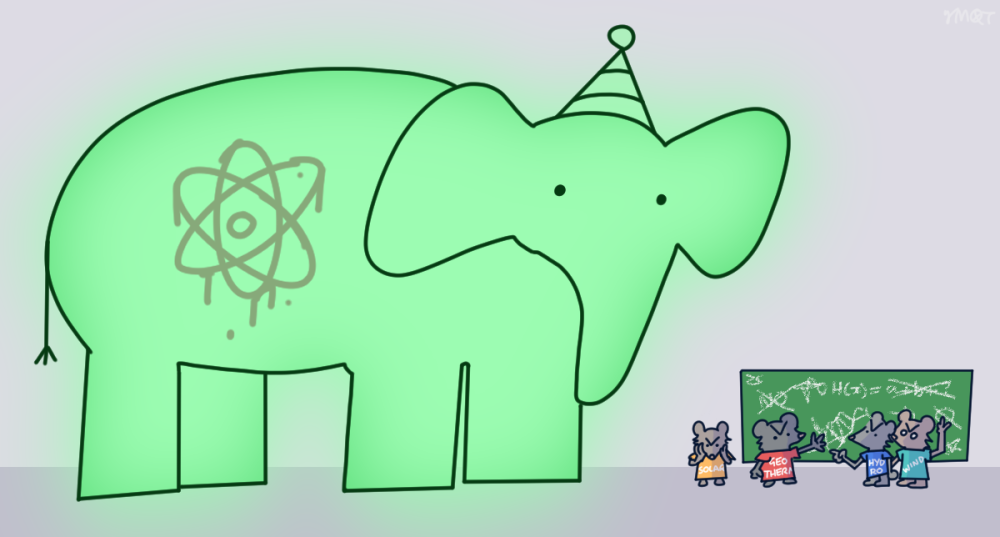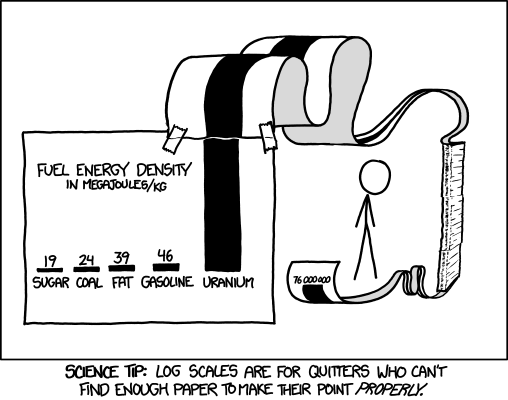Circular Economy and Me – Issue 13

The Glowing Green Elephant in the Room: The Pros and Cons of Embracing Nuclear Energy by Max Quayle
It will not come as a surprise to many that nuclear energy has an image problem. When we hear “nuclear power”, we think of foreboding, grimy cooling towers in Soviet ghost towns; rivers of glowing lime green goo oozing their way through parks and playgrounds; Blinky, the three-eyed fish, swimming merrily in the irradiated waters of Springfield. MRI scanners, which are little more than NMR spectrometers adapted for human tissue, only bear their current name because of the radioactive connotations of the word “nuclear”.1
The Chernobyl disaster of 1986 struck a devastating blow for the nuclear power sector. Reports of men rotting in hospital beds from radiation sickness and thyroid cancer chilled the world to its core. Across the developed world, construction of new nuclear power plants ground to a halt. No politician that valued their career would touch nuclear power with a barge pole. But in recent years, figures across the political spectrum have started to re-examine their positions on nuclear energy. Since the rollback of nuclear in the late 1980s, the cataclysmic effects of anthropogenic climate change have only gotten worse, and global decarbonisation has been alarmingly slow. A few countries with small populations (Bhutan), amenable geography for the construction of hydroelectric dams (Iceland, Norway), or restricted access to electricity due to a lack of infrastructure (Ethiopia, Eswatini) have achieved a level of relative independence from fossil fuels. But for most countries, renewable sources alone are not currently developed enough to satiate the rising energy demands of their people.

Gram for gram, uranium is the most power-dense source of fuel we have on the planet. As shown in the XKCD comic above,2 the energy density of uranium is approximately 76,000,000 megajoules per kilogram – more than 1.5 million times that of petrol, and more than 3 million times that of coal. Fission reactors do not release greenhouse gases into the atmosphere, only water vapour from the cooling towers. Due to uranium’s high energy density, very little waste is produced from fission reactors, and with modern conversion practices, the vast majority of it can be recycled into new fuel rods. Ironically, due to uranium and thorium impurities in the fuel, coal plants also release 100 times more radioactive material into the atmosphere than nuclear reactors.3 Even by the standards of the 1980s, the Chernobyl reactors were outdated and poorly maintained. Modern nuclear reactors are much safer than the crumbling relics of the Atomic Era. As the cost of living and the usage of energy increases, governments across the world have two choices if they do not take nuclear into consideration: switch to renewables and force their people to drastically slash their energy consumption, or throw up their hands and go back to fossil fuels. It should not need stating which option has been more palatable with the political class.
But while nuclear power has its upsides, it should not be seen as a miracle cure for climate change. If humanity is to rely on nuclear energy as part of its transition away from fossil fuels, there are several issues that must be addressed. Firstly, due to the specialist knowledge and regulations involved in their construction, building new nuclear power plants is expensive and time-consuming. Enormous volumes of water are also needed to keep nuclear power plants operational, leaving them susceptible to droughts; a problem that will only be exacerbated as global temperatures continue to rise. Furthermore, while the environmental effects of nuclear waste aren’t quite as dramatic as The Simpsons would have us believe, it still poses a large risk to human health. Plutonium-239 and neptunium-237, two radioisotopes produced through commercial nuclear fission, are alpha-emitters with half-lives of 24,110 years and 2.14 million years, respectively.4,5 Plutonium-239 can also be used as a fissile component in nuclear warheads, raising questions of global security if nuclear power were to be expanded across the globe. And while fission reactors do not release CO2 on their own, the carbon costs of mining and processing uranium ore into fuel rods should not be ignored.6
This brings us to a rather thorny question: should we support the usage of nuclear energy as a stopgap? My answer is “yes, but with a massive asterisk.” Global warming is not a hazy hypothetical; it is happening now, and we should be doing everything in our power to reduce global greenhouse gas emissions. Nuclear energy is undoubtedly preferable to energy sourced from coal, oil, and natural gas, and if given the choice, fossil fuel plants should be taken off the grid before nuclear plants. But whereover possible, the money and manpower required to build more nuclear plants should be spent on the construction of renewable power sources. Solar panels, wind turbines, and hydroelectric dams are becoming more affordable by the day, and the more humanity invests in its own future, the less we will need to use nuclear power as a crutch. The glowing green elephant is not as scary as he appears, but we should make sure that he doesn’t outstay his welcome.
Max Quayle is a computational chemist at Cardiff University. His doctoral research focuses on the uses of computational modelling techniques in green heterogeneous catalysis.
REFERENCES
1. D.W. McRobbie, E.A. Moore, M.J. Greaves, and M.R. Prince, “MRI from Picture to Proton”, 2007.
2. “1162: Log Scale”, XKCD, 2013. https://xkcd.com/1162/
3. J.P. McBride, R.E. Moore, J.P. Witherspoon, and R.E. Blanco, “Radiological Impact of Airborne Effluents of Coal and Nuclear Plants: Radiation Doses From Airborne Effluents of a Coal-Fired Plant may be Greater Than Those from a Nuclear Plant,” 1978, Science, 202(4372), 1045-1050.
4. L. Morss, “Neptunium”, Encyclopaedia Britannica, 2021. Accessed February 2024. https://www.britannica.com/science/neptunium
5. “Physical, Nuclear, and Chemical Properties of Plutonium”. Institute for Energy and Environmental Research. Accessed February 2024. http://ieer.org/resource/nuclear-power/plutonium-factsheet/
6. G.M. Mudd and M. Diesendorf, “Sustainability of Uranium Mining and Milling: Toward Quantifying Resources and Eco-Efficiency”, 2008, Environ. Sci. Technol. 42, 7, 2624–2630.